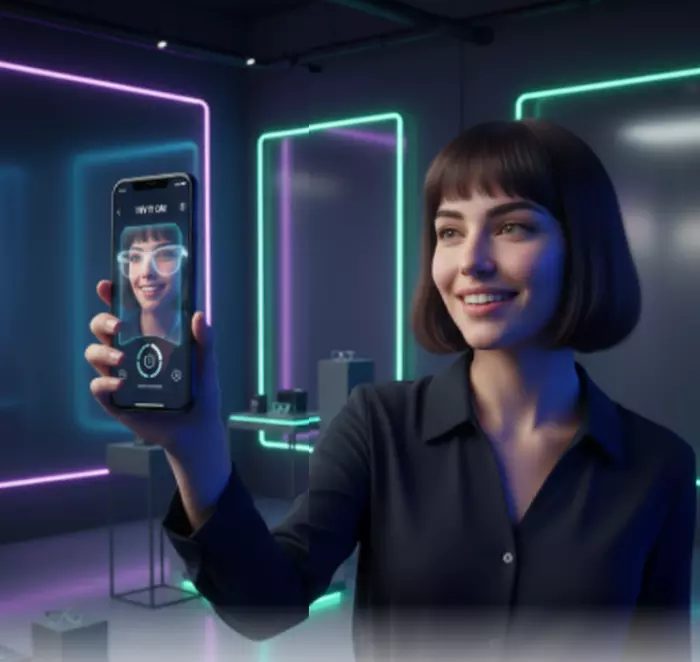GlamAR's augmented reality software


Bridging reality and digital experience
.gif)

Increase interactive engagement
Innovation to drive confidence

Perguntas mais frequentes
Augmented reality (AR) software also adds value to the perception of the real world by overlaying digital information or content, including images, animation, sound, or information, on the physical world visualized through a device. This software involves real-time capturing of the environment around the device using the device sensors and cameras, and the computer vision and AI process this data to identify surfaces or objects. Lastly, there is the 3D rendering, which superimposes the virtual components that merge perfectly with the real world. Place allows your users to visualize the placement of virtual furniture in their room prior to being bought; Snapchat filters add interactive digital effects to faces; GlamAR viewers display 3D product models, and AR measuring tools assist in visualizing the real-world dimensions interactively.
The basic distinction is that AR provides elements of the digital world to the real one, whereas VR makes your users plunge into an entirely virtual world that is substituting reality. AR software is compatible with smartphones, tablets, and AR glasses and is based on overlays of virtual elements over real-life objects, such as the display of digital furniture in your living room or navigation markers on a street. VR, in its turn, involves the use of headsets (such as Oculus Quest or HTC Vive) that cover not only your eyes but also your hands and take you to a completely simulated environment, a virtual game, or a training simulation. AR is the way to keep track of what is physically present around you, with interactive digital displays, whereas VR disables reality to engage in an absolute experience, typically in gaming, simulations, or virtual tours.
Augmented reality is based on smartphones and tablets with cameras, accelerometers, gyroscopes, and, occasionally, depth sensors. The contemporary iOS and Android gadgets generally embrace these features. In addition to the phones, AR glasses and wearables such as AR Microsoft HoloLens and Apple Vision Pro offer more immersive AR experiences, offer hands-free interactivity, and larger areas of vision. Webcams are also capable of limited functionality with some desktop applications that can reach AR. The growing access to WebAR allows your buyers to access AR directly through WebAR browsers without apps, and it increases the number of devices that are compatible.
The use of AR software in businesses has several benefits: Increased customer interaction: AR offers immersive features of exploring products that are engaging and interactive. Increased conversion rates: Virtual try-ons and 3D product viewing assist your customer in making a confident purchase decision. Less product returns: Look/fit visualization means less dissatisfaction and returns, and cost savings. Rich data collection: Behavior data of AR interactions are used to make smarter marketing and product decisions.
The specialized skills and hardware requirements of AR software, as well as the complexity of combining computer vision and 3D rendering with AI, can make them expensive to develop compared with traditional apps. The prices are determined by the complexity of the apps, platform, and what one wants. Nevertheless, new technologies such as platforms of AR development (e.g., Unity, Unreal Engine), pre-existing AR SDKs (e.g., ARKit, ARCore), and the WebAR technology are reducing barriers. Easy AR experiences give businesses the option of simpler solutions to all-custom solutions, depending on their budget and objectives.
GlamAR AR software solutions are the 3D AR product visualization suitable for any sort of e-commerce site. The GlamAR's AR software is also useful in other sectors such as education, healthcare, and industrial training. Also, companies like Low Cost Glasses, among other customers, have used and tested GlamAR's solution for their business advantage.
















